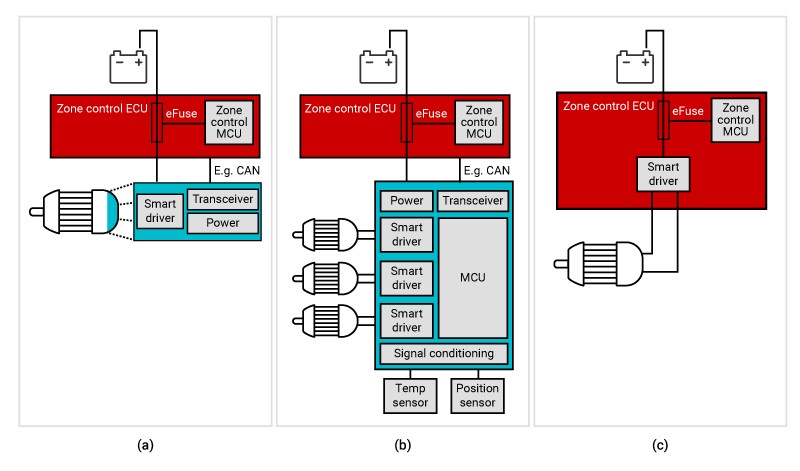SPRY345B february 2022 – april 2023 DP83TG720R-Q1 , DP83TG720S-Q1 , TCAN1043A-Q1
- At a glance
- Authors
- Introduction
- Overcoming E/E architecture challenges
- Power distribution challenges and solutions
- Decentralization of power distribution
- Replacing melting fuses with semiconductor fuses
- Smart sensor and actuator challenges and solutions
- Zonal modules –new microcontroller requirements
- Smart sensors and actuators
- Data challenges and solutions
- Types of data
- Time sensitivity of data
- Communication security
- Conclusion
Smart sensors and actuators
The separation of logical and physical I/O functions affects the sensors and actuators. ICs targeted for conditioning sensor signals and driving actuators require enhancement with local intelligence and communication capabilities. Local intelligence maintains the state of the circuit and may run background diagnostics to detect sensor or actuator faults. The integrated communication interface includes at least a protocol handler such as a LIN responder implementation or even a simpler version of the CAN FD data link layer. Such integration would enable the smart IC to autonomously control a sensor or actuator and create a cost- and size-optimized solution that could be integrated into the sensor or actuator housing, as shown in Figure 6 (a).
 Figure 6 Driver implementation
examples: smart driver integrated in confined housing (a); small ECU for
composite actuator solutions (b); simple actuator controlled from a zonal module
(c).
Figure 6 Driver implementation
examples: smart driver integrated in confined housing (a); small ECU for
composite actuator solutions (b); simple actuator controlled from a zonal module
(c).For more complex sensors (such as a radar satellite) or composite actuators (such as a seat control unit with various motors), a classic approach based on a small ECU might remain the most efficient solution (see Figure 6 (b)). Additionally, dedicated signal lines from a zonal module (see Figure 6 (c)) can directly control very simple sensors or actuators.
Depending on aspects such as the number of control and sense signals, sensor and actuator complexity, and mounting constraints, designers may selectively choose any one of these solutions.